Seasonal Horse Care Tips
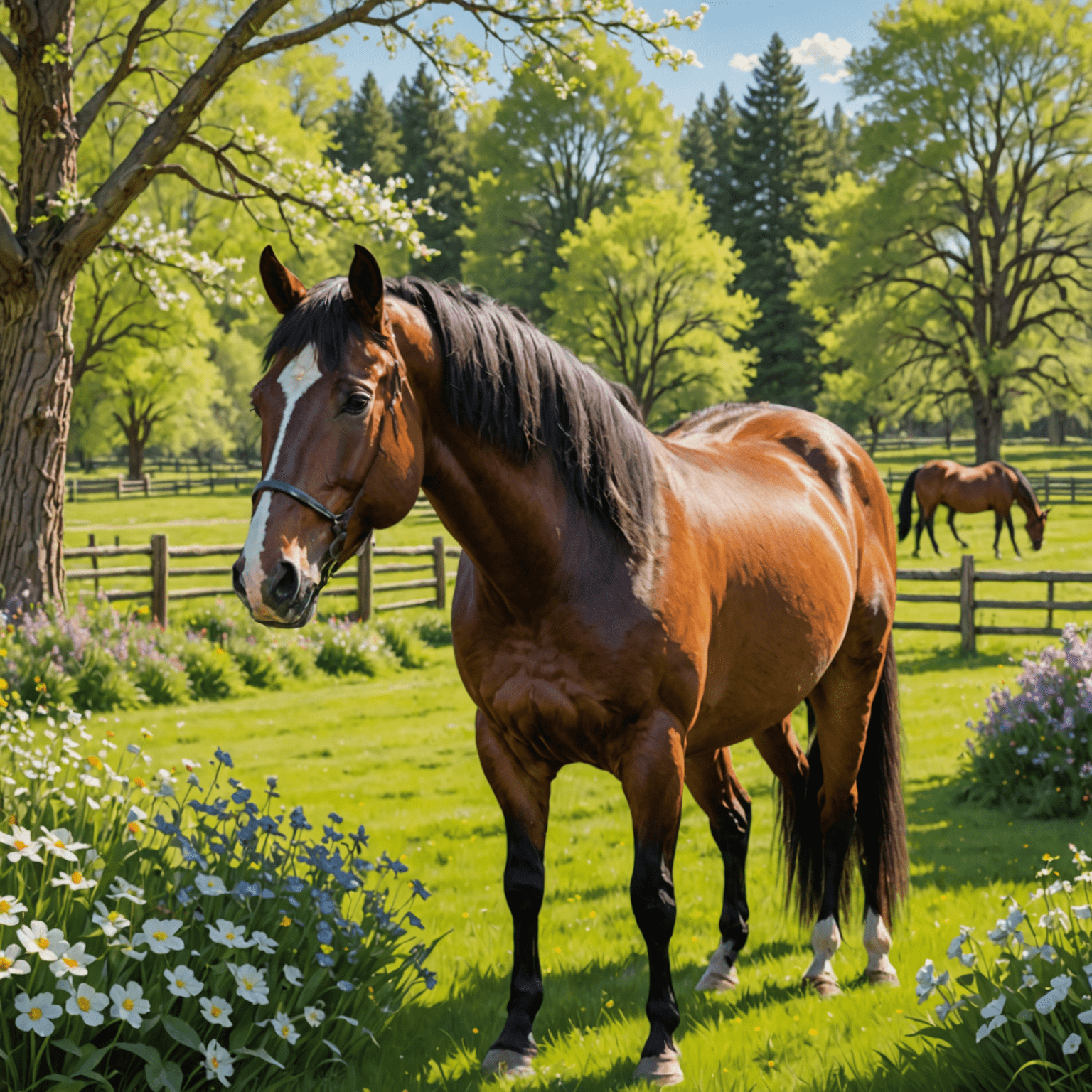
Adapting your horse care routine to each season ensures optimal health and comfort year-round
Spring Care Essentials
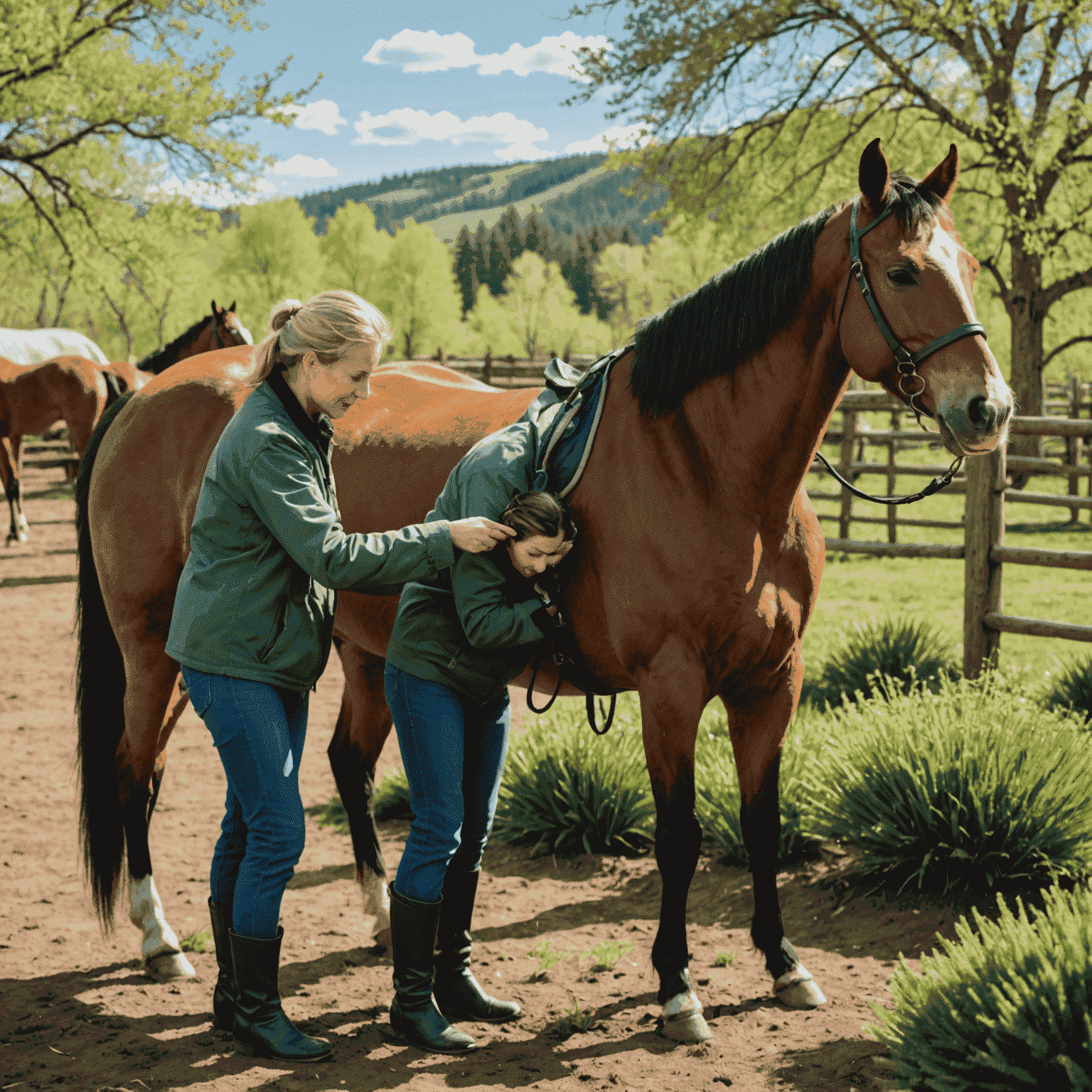
Shedding and Grooming
As temperatures rise, horses naturally shed their winter coats. Daily grooming with shedding tools helps remove loose hair and stimulates circulation. This is also an excellent opportunity to check for any skin issues that may have developed over winter.
Parasite Prevention
Spring is the ideal time to implement your annual deworming program. Consult with your veterinarian about the most effective protocol based on your horse's specific needs and your local climate conditions.
Pasture Management
As grass begins to grow, gradually introduce horses to spring pastures to prevent digestive upset and conditions like laminitis. Begin with 15-30 minutes of grazing time and slowly increase over several weeks. Monitor pastures for toxic plants that may emerge in spring.
Vaccination Schedule
Spring is typically when annual vaccinations should be administered. Core vaccines include tetanus, Eastern/Western equine encephalomyelitis, West Nile virus, and rabies. Your veterinarian may recommend additional vaccines based on your region and your horse's exposure risk.
Summer Heat Management
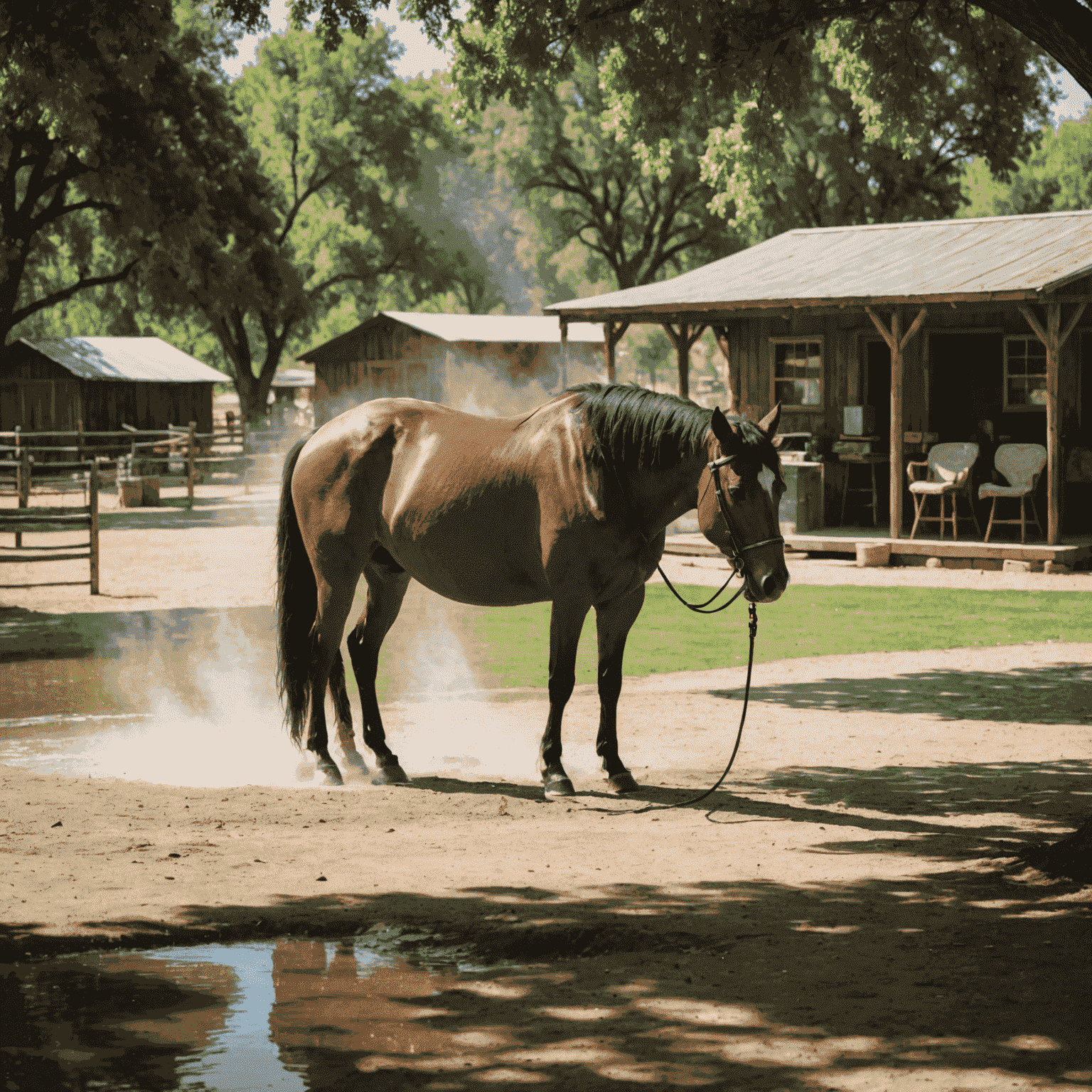
Hydration Strategies
Horses can drink 5-10 gallons of water daily during hot weather. Ensure clean, fresh water is always available. Adding electrolytes to their diet can encourage drinking and replace minerals lost through sweating. Consider providing salt blocks in pastures and stalls.
Cooling Techniques
When temperatures soar, use cold hosing on legs and major blood vessels (neck, chest, and inner thighs) to help reduce body temperature. Fans in stables improve air circulation, while misters can provide additional cooling in extremely hot conditions.
Adjusting Exercise Routines
Schedule riding sessions for early morning or evening when temperatures are cooler. Be aware of humidity levels—high humidity combined with high temperatures significantly increases the risk of heat stress. Allow for proper warm-up and cool-down periods, and reduce workout intensity during heat waves.
Sun Protection
Horses with pink skin or white markings are susceptible to sunburn. Apply equine-specific sunscreen to vulnerable areas. Lightweight fly sheets can provide UV protection while allowing airflow. Ensure access to natural or constructed shade in all turnout areas.
Fall Transition Care
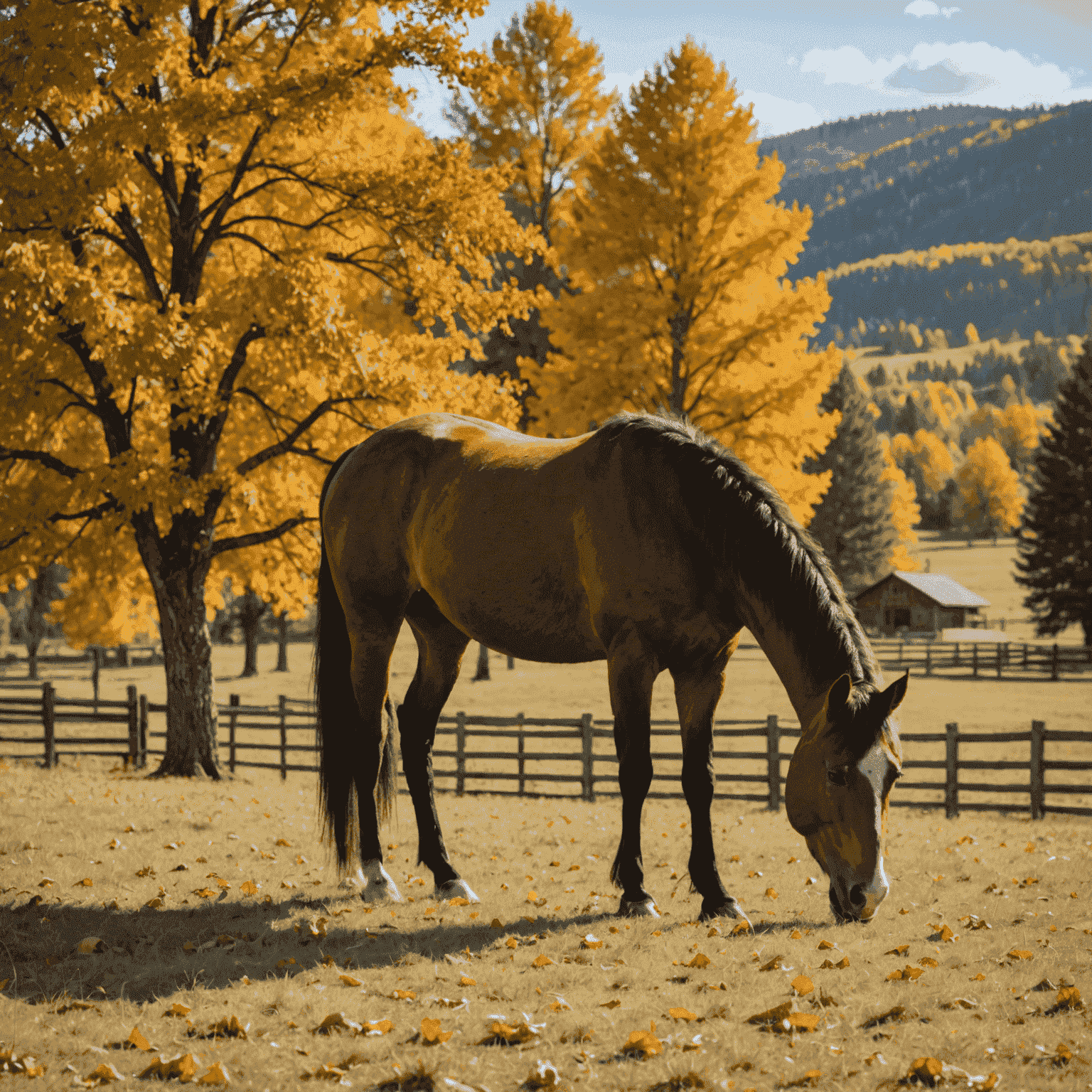
Nutrition Adjustments
As pasture quality declines, gradually increase hay portions to maintain weight and provide necessary fiber. Consider adding omega-3 fatty acids to support coat health during the transition to winter. Monitor body condition closely and adjust feed accordingly.
Hoof Care Considerations
Fall's fluctuating moisture levels can impact hoof health. Maintain regular farrier visits and consider using hoof conditioners appropriate for your climate. Check hooves daily for trapped debris or signs of thrush as conditions become wetter.
Preparing for Temperature Changes
Fall weather can be unpredictable. Have lightweight blankets ready for unexpected cold snaps, especially for clipped, senior, or thin-skinned horses. Ensure your horse has access to shelter from rain and wind, which can significantly lower body temperature even when air temperatures seem moderate.
Dental Check-ups
Schedule dental examinations before winter to address any issues that might affect your horse's ability to chew hay efficiently during the colder months when caloric needs increase. Proper dental care ensures maximum nutrition absorption from winter feed.
Winter Blanketing and Care
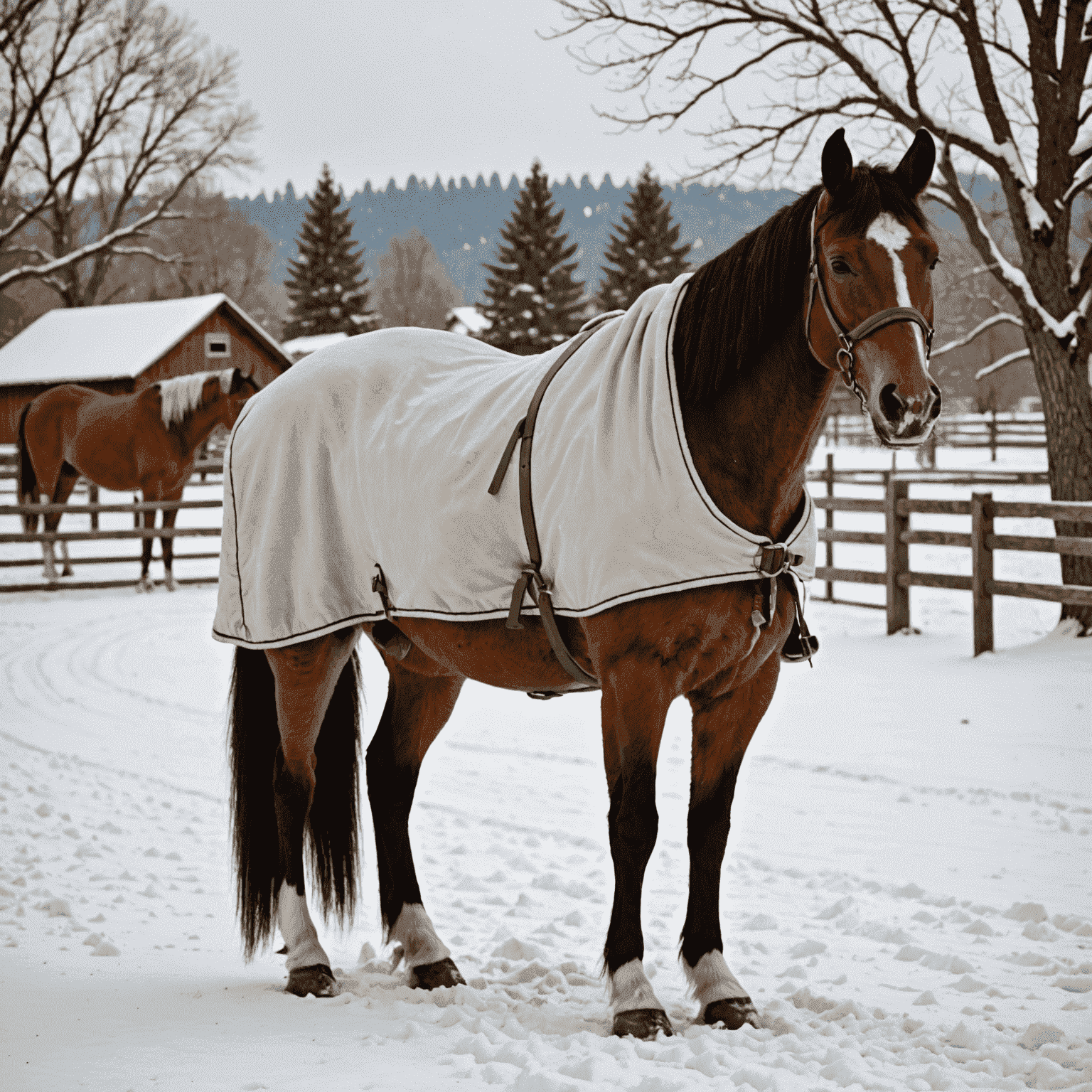
Blanketing Decisions
Not all horses need blankets—factors include coat thickness, age, health status, and shelter availability. If blanketing, choose appropriate weights for the temperature and ensure proper fit to prevent rubbing and slipping. Remove and check under blankets daily to monitor for skin issues or overheating.
Winter Nutrition
Horses require 15-25% more calories in cold weather to maintain body temperature. High-quality forage should form the foundation of winter feeding. Consider adding warm bran mashes with added water to help with hydration. Monitor weight weekly, as winter coats can hide weight loss.
Water Management
Horses often drink less in winter, increasing impaction colic risk. Check water sources multiple times daily to ensure they haven't frozen. Water heaters, insulated buckets, or offering slightly warmed water can encourage drinking. Some horses prefer water between 45-65°F rather than very cold water.
Exercise and Turnout
Maintain regular exercise to support joint health and prevent stiffness. Clear safe paths in snowy conditions and be cautious of ice. If riding is limited, hand-walking, lunging, or turnout in a covered arena can provide necessary movement. Monitor for signs of arthritis which can worsen in cold weather.
Year-Round Essentials
Consistent Health Monitoring
Regardless of season, maintain regular veterinary check-ups and develop a habit of daily health assessments. Check vital signs, appetite, manure consistency, and general demeanor. Early detection of health issues significantly improves treatment outcomes.
Hoof Care Maintenance
Schedule regular farrier visits every 6-8 weeks throughout the year. Daily hoof picking and observation should be part of your routine regardless of season. Adjust hoof care products based on environmental conditions—moisture levels in particular.
Mental Stimulation
Provide environmental enrichment appropriate to each season. This might include varied turnout companions, different grazing areas, or stable toys. Mental well-being is as important as physical health for horses confined more during extreme weather.
Seasonal Care Calendar: Quick Reference
Spring (March-May)
- Implement gradual spring turnout schedule
- Schedule annual vaccinations
- Begin parasite control program
- Daily grooming to assist with shedding
- Check and repair fencing and shelters
Summer (June-August)
- Monitor for heat stress and dehydration
- Provide constant access to shade and fresh water
- Adjust exercise schedule to cooler hours
- Implement fly control measures
- Check water quality in ponds/natural sources
Fall (September-November)
- Schedule dental check-ups
- Gradually increase hay as pasture quality declines
- Prepare blankets and winter equipment
- Ensure adequate shelter for changing weather
- Consider body clipping decisions based on workload
Winter (December-February)
- Monitor water sources for freezing
- Increase feed to meet higher caloric requirements
- Check blankets daily for fit and condition
- Provide adequate shelter from wind and precipitation
- Maintain exercise routine despite weather challenges
Conclusion
Proper seasonal horse care is a year-round commitment that requires attention to changing environmental conditions and your horse's individual needs. At Heritage View Ranch, we believe that adapting your care routine to each season's unique challenges is essential for maintaining optimal equine health and well-being.
Remember that each horse is an individual—factors such as age, breed, health status, and previous experiences will influence how they respond to seasonal changes. Always consult with your veterinarian and other equine professionals to develop a customized care plan that addresses your horse's specific requirements throughout the year.
By staying attentive to seasonal shifts and proactively adjusting your horse care practices, you'll ensure your equine companion remains comfortable, healthy, and happy in every season.